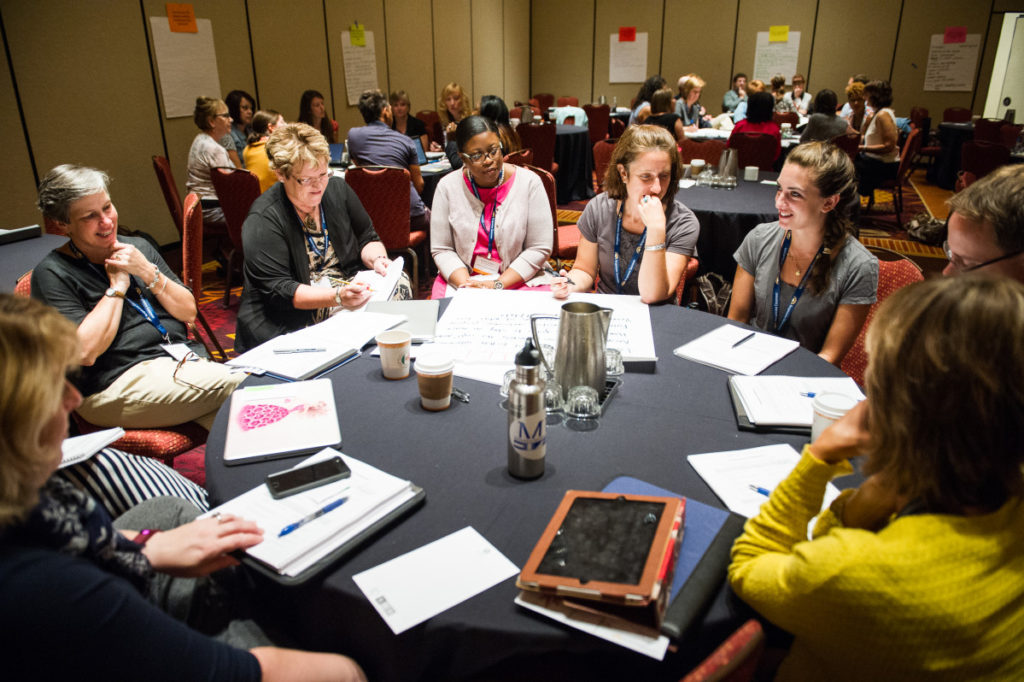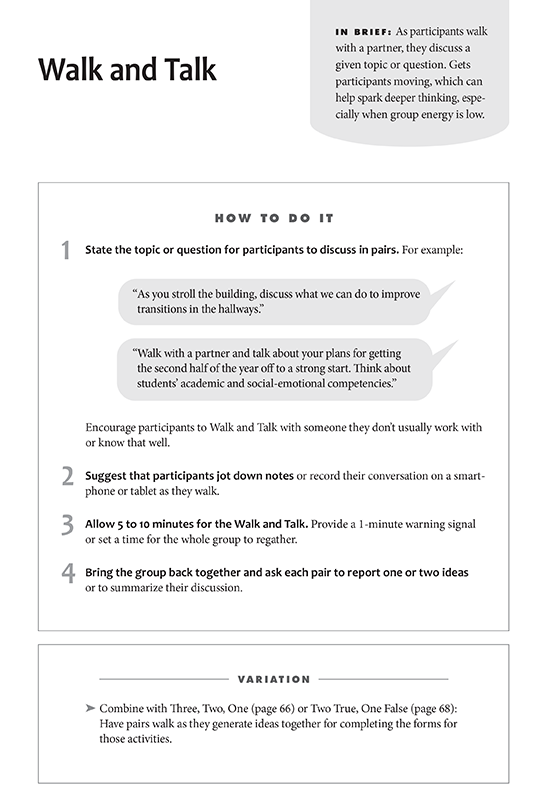
With increasing demands to meet rigorous curriculum standards and improve the quality of instruction, efficient, productive professional development (PD) and staff meetings are more critical than ever. Too often, though, these sessions fall short of being fully engaging and productive—and educators miss out on opportunities for professional growth. The familiar lecture-style meeting can leave participants feeling disengaged and facilitators weary; a free-wheeling discussion often feels aimless and unsafe.
In contrast, the use of interactive learning structures can help create an environment that promotes positive risk-taking and honest, respectful dialogue, which are absolutely essential for PD and staff meetings to truly come alive with learning. And just as our students need active and interactive learning to do their best, so too do adults. Interactive learning structures enable every participant to actively engage with the facilitator, with one another, and with the content.
If you’re leading a meeting or PD session, check out these ways to ensure a productive and engaging meeting:
For more than three decades, facilitators of Responsive Classroom workshops have been using interactive learning structures to fully engage adult participants. In the Responsive Classroom book Energize Your Meetings!, you can learn how to make effective use of 35 of these structures. Here is a sample from the book:

Some of these structures were adapted from ones used successfully with children in the classroom; others were devised just for adults. Regardless, these 35 learning structures are tried-and-true solutions for successful PD.
These structures provide a wide variety of opportunities for professionals to engage with one another in dynamic and respectful ways. Some structures, such as having participants share thoughts with a partner about a question the group leader poses, are very simple. Others, such as having small groups use a step-by-step approach to analyze possible solutions to a shared problem, are more involved.
Every learning structure featured in the book enables participants to work together effectively and strengthen their group intelligence while also building their individual knowledge. The result: more meaningful and productive gatherings, no matter the purpose or size of your group.
The interactive learning structures in this new book can enrich any professional development session or staff meeting, enabling educators to do their best learning and work together efficiently, respectfully, and dynamically.
Get step-by-step instructions for easy-to-use interactive structures that will make your staff meetings, study groups, and other professional development sessions more productive and engaging. Use these tried-and-true methods to:
Energize Your Meetings! includes a guide to help you choose the best structure for the adult learners in your group, practical tips for success, variations to keep things lively, and examples showing each structure in action.
”Structures that get learners involved have always been an essential element of Responsive Classroom trainings and critical to their success. I am really excited that we are making these powerful tools available to other educators!”